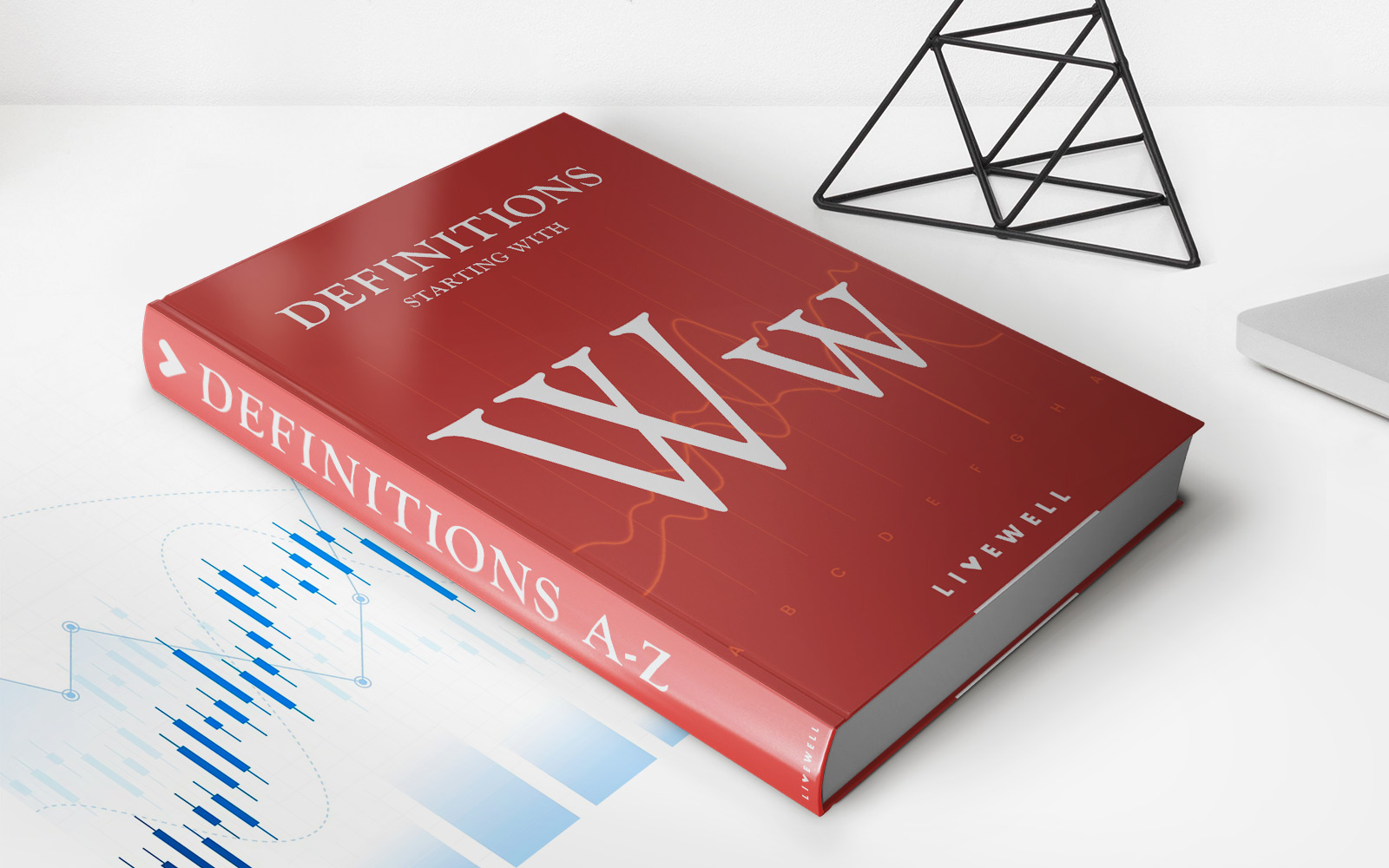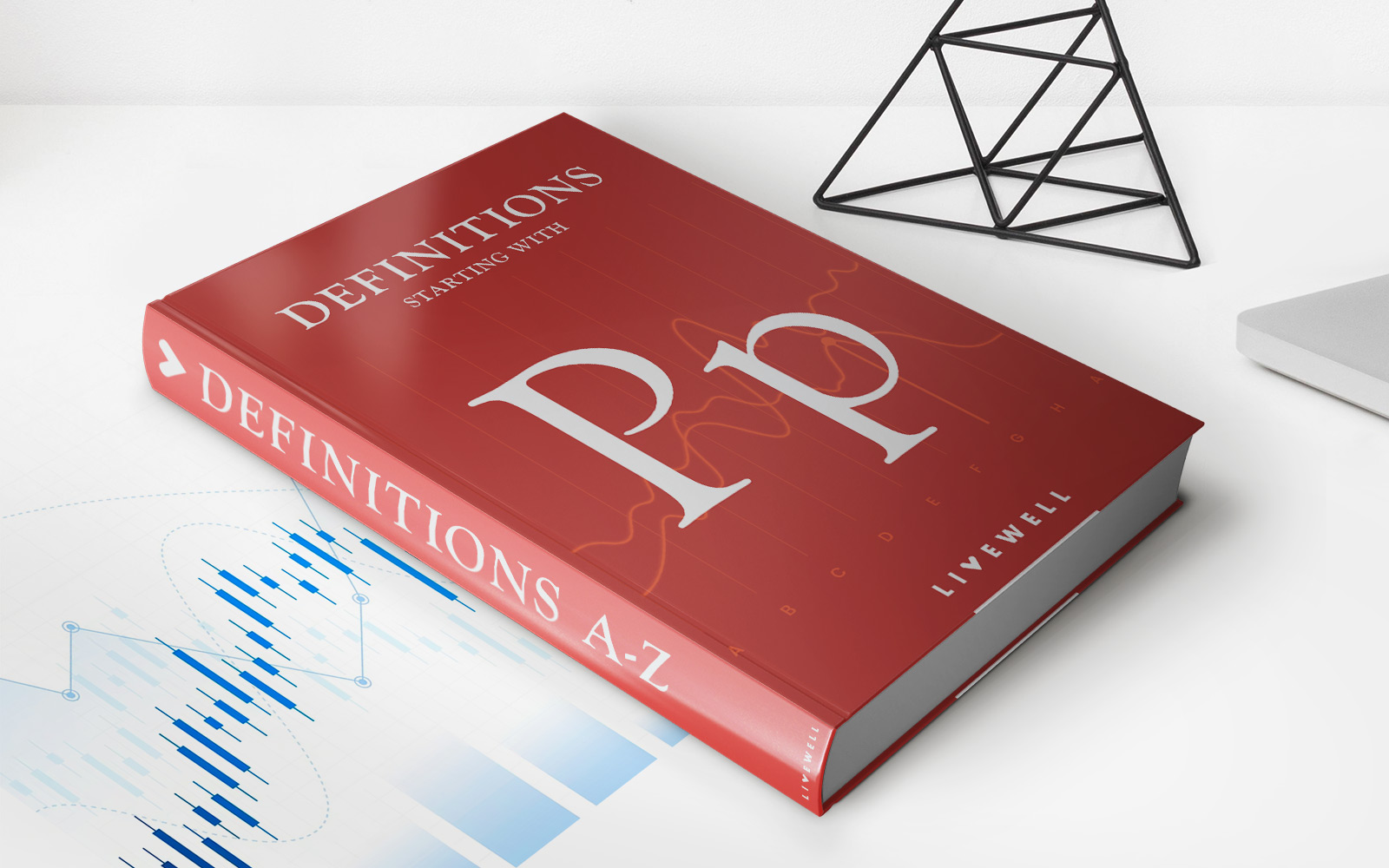

Finance
What Is Push Down Accounting
Published: October 9, 2023
Learn about push down accounting and its role in finance. Understand how this accounting method affects financial reporting and consolidation.
(Many of the links in this article redirect to a specific reviewed product. Your purchase of these products through affiliate links helps to generate commission for LiveWell, at no extra cost. Learn more)
Table of Contents
Introduction
Welcome to the world of finance and accounting, where complex concepts and regulations govern how companies report their financial statements. One such concept that plays a crucial role in financial reporting is push down accounting. In this article, we will explore the ins and outs of push down accounting, its purpose, how it works, the benefits it offers, and its limitations.
Push down accounting is a method used in financial reporting when there is a change in ownership or control of a business. It primarily focuses on adjusting the financial statements of the acquired company to reflect the financial position and performance from the perspective of the new controlling entity. This ensures transparency and clarity in reporting, especially when significant changes occur in the ownership structure of a company.
The main purpose of push down accounting is to provide users of financial statements with accurate and relevant information about the acquired entity. It facilitates comparability and consistency in financial reporting by aligning the financial statements with the new controlling entity’s accounting policies and practices.
So, how does push down accounting work? When there is a change in control, the new owner has the option to adopt push down accounting. If chosen, the acquired company’s assets and liabilities are restated to fair market value as of the acquisition date. The restated values become the basis for the new financial statements, which will reflect the financial position and performance of the acquired company under the ownership and control of the new entity.
This method offers several benefits. Firstly, it provides a more accurate representation of the acquired company’s financial position by reflecting the fair market value of assets and liabilities. This allows stakeholders to make informed decisions based on the updated and relevant financial information. Secondly, push down accounting promotes consistency and comparability in financial reporting, as the new financial statements conform to the accounting policies and practices of the new controlling entity. Additionally, it ensures transparency by clearly delineating the financial results of the acquired company after the change in control.
However, like any accounting method, push down accounting has its limitations. It can be complex, requiring thorough analysis and valuation of assets and liabilities. This process can be time-consuming and costly, especially for large and complex acquisitions. Moreover, push down accounting may result in significant changes in the financial statements, which can impact key financial ratios and performance indicators. Therefore, it is important for users of financial statements to understand the implications of push down accounting and consider the potential distortions it may introduce.
Now that we have covered the introduction to push down accounting, let us delve deeper into its definition, purposes, working mechanism, benefits, limitations, and provide real-world examples to contextualize its application. So, buckle up and join us on this journey through the world of push down accounting!
Definition of Push Down Accounting
Push down accounting is a financial reporting method used when there is a change in ownership or control of a business. It involves adjusting the financial statements of the acquired company to reflect the financial position and performance from the perspective of the new controlling entity. The purpose of push down accounting is to provide users of financial statements with accurate and transparent information about the acquired entity.
When a change in control occurs, the acquiring company has the option to adopt push down accounting. This method requires restating the acquired company’s assets and liabilities to their fair market values as of the acquisition date. This restatement ensures that the financial statements reflect the financial position of the acquired company under the new ownership and control.
By adopting push down accounting, the acquiring company can align the acquired company’s financial statements with its own accounting policies and practices. This helps promote consistency and comparability in financial reporting, making it easier for stakeholders to analyze and evaluate the financial performance of both the acquiring company and the acquired entity.
Push down accounting does not change the fundamentals of the financial statements or the transaction itself; instead, it adjusts the values to reflect the change in control. The restated financial statements present a more accurate portrayal of the acquired company’s financial position and performance under the new control, allowing stakeholders to make informed decisions based on the updated financial information.
It is important to note that push down accounting applies to both the standalone financial statements and consolidated financial statements. In the case of consolidated financial statements, push down accounting is used to reflect the financial position of the acquired entity within the consolidated group.
Overall, push down accounting is a crucial tool in financial reporting that ensures the transparency, accuracy, and clarity of the acquired entity’s financial position and performance after a change in control. It enables stakeholders to understand the impact of the new control on the acquired company’s finances and supports better decision-making based on relevant and reliable information.
The Purpose of Push Down Accounting
The purpose of push down accounting is to provide users of financial statements with accurate and relevant information about an acquired entity after a change in ownership or control. It aims to align the financial statements of the acquired company with the new controlling entity’s accounting policies and practices, ensuring consistency and comparability in financial reporting.
One of the main reasons for using push down accounting is to reflect the fair market value of the acquired company’s assets and liabilities. By restating these values to their fair market values as of the acquisition date, push down accounting provides a more accurate representation of the acquired entity’s financial position. This allows stakeholders, such as investors, creditors, and analysts, to make informed decisions based on up-to-date and relevant financial information.
Another purpose of push down accounting is to promote transparency in financial reporting. By adjusting the financial statements to reflect the new controlling entity’s accounting policies and practices, it clearly delineates the financial results of the acquired company under the new control. This transparency is especially important when there are significant changes in the ownership structure of a company, as it allows stakeholders to understand the impact of the change in control on the acquired entity’s financial performance.
Furthermore, push down accounting facilitates comparability across financial periods. When a change in control occurs, adopting push down accounting ensures that the financial statements of the acquired company are consistent with the accounting policies and practices of the new controlling entity. This consistency enables stakeholders to effectively compare the financial performance of the acquired entity before and after the change in control, providing valuable insights into the overall financial health of the business.
Push down accounting also helps in the preparation of consolidated financial statements. When an acquiring company consolidates the financial statements of its subsidiaries, push down accounting allows for the proper inclusion of the acquired company’s financial position and performance within the consolidated group. This ensures that the consolidated financial statements accurately reflect the combined operations of the group, providing a comprehensive overview of its financial standing.
In summary, the purpose of push down accounting is to enhance the accuracy, transparency, and comparability of financial reporting after a change in ownership or control. By restating the acquired company’s financial statements to reflect the fair market value and aligning them with the accounting policies of the new controlling entity, push down accounting provides stakeholders with a clear understanding of the acquired entity’s financial position and performance under the new control.
How Push Down Accounting Works
Push down accounting is a method used in financial reporting to adjust the financial statements of an acquired company after a change in ownership or control. This adjustment ensures that the financial position and performance of the acquired entity are reflected from the perspective of the new controlling entity.
When a change in control occurs, the new owner has the option to adopt push down accounting. If chosen, the acquired company’s financial statements will be restated to reflect fair market values as of the acquisition date. The restated values become the basis for the new financial statements, which will show the financial position and performance of the acquired company under the ownership and control of the new entity.
The process of push down accounting involves several key steps. Firstly, the acquiring company needs to identify and record the fair market value of the acquired company’s assets and liabilities as of the acquisition date. This valuation process may require the assistance of experts, such as appraisers or valuation specialists, especially if the assets and liabilities have complex or unique characteristics.
Once the fair market values are determined, the acquiring company adjusts the acquired company’s assets and liabilities accordingly in its financial statements. This adjustment is made to reflect the new controlling entity’s accounting policies and practices. It ensures that the financial statements provide a consistent and comparable view of the acquired company’s financial position under the new control.
After the adjustment is made, the acquiring company prepares new financial statements for the acquired entity. These financial statements will reflect the restated values of the assets and liabilities and present the financial position, results of operations, and cash flows of the acquired company from the perspective of the new controlling entity.
In addition to standalone financial statements, push down accounting also applies to consolidated financial statements. In the case of consolidated financial statements, the acquiring company includes the restated financial information of the acquired entity within the consolidated group. This ensures that the consolidated financial statements accurately reflect the financial position and performance of the entire group, taking into account the acquired company’s operations and financials.
Overall, push down accounting works by adjusting the financial statements of an acquired company to reflect fair market values and align them with the accounting policies of the new controlling entity. This process provides stakeholders with a more accurate and transparent view of the acquired entity’s financial position and performance under the new control, promoting consistency and comparability in financial reporting.
Benefits of Push Down Accounting
Push down accounting offers several benefits to companies and stakeholders when there is a change in ownership or control. By adjusting the financial statements of the acquired company to reflect the fair market values and align them with the accounting policies of the new controlling entity, push down accounting provides valuable insights and enhances financial reporting accuracy.
One of the main benefits of push down accounting is the provision of a more accurate representation of the acquired company’s financial position. By restating the assets and liabilities to fair market values, push down accounting ensures that the financial statements reflect the true value of the acquired entity. This allows stakeholders, such as investors and creditors, to make informed decisions based on up-to-date and relevant financial information.
Push down accounting also promotes consistency and comparability in financial reporting. By aligning the acquired company’s financial statements with the accounting policies of the new controlling entity, it allows for better comparison of financial performance over different periods. This consistency aids in identifying trends, analyzing financial health, and making more accurate assessments of the acquired entity’s financial position and performance.
Another benefit of push down accounting is transparency. By clearly delineating the financial results of the acquired company after the change in control, push down accounting provides stakeholders with a transparent view of the impact of the new control on the financial performance of the acquired entity. This transparency is crucial for decision-making, as it helps stakeholders assess the potential risks and opportunities associated with the acquisition.
Furthermore, push down accounting supports the preparation of consolidated financial statements. When an acquiring company consolidates the financial statements of its subsidiaries, push down accounting ensures that the financial position and performance of the acquired entity are properly included within the consolidated group. This comprehensive view helps stakeholders assess the overall financial health and performance of the entire group.
Moreover, push down accounting facilitates compliance with accounting regulations and standards. By adhering to the principles of push down accounting, companies demonstrate their commitment to transparent and accurate financial reporting, which is essential in maintaining trust and credibility among stakeholders.
In summary, the benefits of push down accounting include providing a more accurate representation of the acquired company’s financial position, promoting consistency and comparability in financial reporting, enhancing transparency, facilitating the preparation of consolidated financial statements, and supporting compliance with accounting regulations. By adopting this method, companies can provide stakeholders with reliable and relevant information, enabling them to make informed decisions and assessments about the acquired entity’s financial position and prospects.
Limitations of Push Down Accounting
While push down accounting offers important benefits, it is important to acknowledge its limitations. Understanding these limitations can help stakeholders interpret and evaluate financial statements accurately when a change in ownership or control occurs.
One limitation of push down accounting is the complexity and potential cost involved. Restating the financial statements of an acquired company to reflect fair market values requires a thorough analysis and valuation process. This process can be time-consuming and expensive, especially for large and complex acquisitions. Companies may need to engage external valuation specialists to determine the fair values of assets and liabilities accurately.
Another limitation is the potential impact on financial ratios and performance measures. Restating the financial statements of the acquired company can result in significant changes to key financial ratios and indicators. These changes may not necessarily reflect the true operational performance of the acquired entity but rather the adjustments made under push down accounting. Stakeholders need to be aware of these distortions and consider them when evaluating the financial health and performance of the acquired company.
Push down accounting may also introduce inconsistencies in financial reporting. Although its purpose is to align the acquired company’s financial statements with the accounting policies of the new controlling entity, this alignment may not always be straightforward. The acquired company may have different accounting practices, and transitioning to the new policies can be challenging. This may result in inconsistencies in financial reporting, making it difficult for stakeholders to compare financial statements over different periods.
Furthermore, push down accounting does not consider the tax implications of the change in ownership or control. The tax consequences of the transaction are typically dealt with separately, often following specific tax regulations and rules. Companies need to carefully analyze the tax implications of the transaction and comply with the applicable tax laws to ensure accurate tax reporting.
Lastly, push down accounting may not be universally accepted or required by all accounting standards or regulatory bodies. The application of push down accounting may vary depending on the jurisdiction and specific circumstances of the transaction. Stakeholders need to be aware of the relevant accounting standards and regulations governing push down accounting in their jurisdiction to ensure compliance and consistency in financial reporting.
Despite these limitations, push down accounting remains a valuable tool in financial reporting, providing stakeholders with transparency and relevant information about the acquired entity. By understanding these limitations, stakeholders can critically evaluate the restated financial statements, considering the potential distortions and inconsistencies introduced by push down accounting. This informed assessment helps stakeholders make more accurate and reliable decisions based on the financial information presented.
Examples of Push Down Accounting
To better understand how push down accounting works in real-world scenarios, let’s explore a couple of examples:
Example 1: Acquisition of Company XYZ
Company ABC acquires Company XYZ, a manufacturing company. After the acquisition, Company ABC decides to adopt push down accounting to reflect the financial position and performance of Company XYZ under its ownership and control.
The first step is to determine the fair market values of Company XYZ’s assets and liabilities as of the acquisition date. Appraisers and valuation specialists are engaged to perform a thorough analysis and valuation process. Based on their assessment, the fair market value of Company XYZ’s assets is determined to be $10 million, and its liabilities are valued at $6 million.
Company ABC then adjusts the financial statements of Company XYZ to reflect these fair market values. The assets and liabilities are restated accordingly, ensuring alignment with Company ABC’s accounting policies and practices. The restated financial statements now present an accurate representation of Company XYZ’s financial position under the new control.
These restated financial statements are then used to prepare the new financial statements for Company XYZ. The financial statements now show the fair values of assets and liabilities, reflecting the financial performance of Company XYZ from the perspective of Company ABC. Stakeholders can now analyze and evaluate Company XYZ’s financial position and performance under the new ownership.
Example 2: Consolidated Financial Statements
Company ABC is a parent company with multiple subsidiaries, including Company XYZ. Company ABC decides to prepare consolidated financial statements to provide a comprehensive view of the overall financial position and performance of the group.
Including Company XYZ’s financials in the consolidated financial statements requires the application of push down accounting. Company ABC aligns Company XYZ’s financial statements with its accounting policies and practices to ensure consistency and comparability in financial reporting.
Using push down accounting, the fair market values of Company XYZ’s assets and liabilities are determined, and the financial statements are restated accordingly. These restated financials are then consolidated with the financial statements of Company ABC and other subsidiaries.
The consolidated financial statements reflect the combined financial position and performance of the entire group under the control of Company ABC. Stakeholders can now analyze the overall financial health, profitability, and cash flow of the consolidated group, taking into account the operations and financials of Company XYZ.
These examples illustrate how push down accounting is applied in real-life situations. Whether it’s reflecting the financials of an acquired company under new ownership or including the financials of subsidiaries in consolidated statements, push down accounting ensures accurate and transparent reporting of the acquired entity’s financial position and performance.
Differences between Push Down Accounting and Pooling of Interests Method
Push down accounting and the pooling of interests method are two distinct accounting approaches used in financial reporting, particularly when there is a change in ownership or control of a business. While they both address the impact of ownership changes on financial statements, they differ in terms of their applicability, accounting treatment, and implications.
Applicability: Push down accounting is typically used when there is a significant change in ownership or control, and the acquiring company intends to reflect the fair market values of the acquired company’s assets and liabilities. It is commonly applied in business acquisitions or consolidations. On the other hand, the pooling of interests method is used when two companies merge and both parties merge their assets and liabilities on a combined basis without recognizing the fair market value of assets and liabilities.
Accounting Treatment: Under push down accounting, the acquiring company restates the financial statements of the acquired company to reflect fair market values as of the acquisition date. This restatement involves adjusting the values of assets and liabilities to align them with the accounting policies and practices of the new controlling entity. In contrast, the pooling of interests method combines the financial statements of both merging companies as if they have always been a single entity. The historical cost of assets and liabilities is simply added together, and no fair value adjustments are made.
Implications: Push down accounting has implications on financial ratios and performance indicators. By restating the acquired company’s financial statements to fair market values, it may result in significant changes to key financial ratios, such as return on assets or debt-to-equity ratio. It is important for stakeholders to recognize these potential distortions and understand their impact on the evaluation of the acquired company’s financial health and performance. Conversely, the pooling of interests method does not impact financial ratios, as the financial statements are simply combined without any fair value adjustments.
Legislative and Regulatory Differences: The application of push down accounting and the pooling of interests method may vary depending on the accounting standards and regulatory requirements of different jurisdictions. While push down accounting is widely accepted and practiced under various accounting frameworks, the pooling of interests method has been phased out by many accounting standards, as it has been replaced by other methods, such as the acquisition method or business combination accounting.
Subsequent Financial Reporting: Push down accounting is typically a one-time adjustment at the time of acquisition, where the acquired company’s financial statements are restated to reflect fair market values. However, the pooling of interests method assumes that the combined entity will continue to operate as a single entity, and subsequent financial reporting will be based on the combined entity’s financials. Any subsequent changes in ownership or control will be reflected through other accounting methods.
In summary, push down accounting and the pooling of interests method differ in their applicability, accounting treatment, implications on financial ratios, legislative and regulatory requirements, and subsequent financial reporting. Understanding these differences is crucial for stakeholders to interpret and evaluate financial statements accurately when there are changes in ownership or control of a business.
Conclusion
In conclusion, push down accounting is an essential method used in financial reporting when there is a change in ownership or control of a business. Its purpose is to provide users of financial statements with accurate and relevant information about the acquired entity under the new controlling entity’s ownership and control. Push down accounting achieves this by restating the acquired company’s financial statements to reflect fair market values and aligning them with the accounting policies and practices of the new controlling entity.
Throughout this article, we have explored the definition, purpose, and working mechanism of push down accounting. We have also discussed the benefits it offers, such as providing a more accurate representation of the acquired company’s financial position, promoting consistency and comparability in financial reporting, and enhancing transparency. However, we have also recognized the limitations of push down accounting, including its complexity, potential impact on financial ratios, and the need for compliance with accounting standards and regulations.
Furthermore, we have examined examples of push down accounting to illustrate its application in real-world scenarios. These examples have demonstrated how push down accounting is used to reflect the financial position and performance of the acquired entity under new ownership and how it supports the preparation of consolidated financial statements.
Lastly, we have highlighted the differences between push down accounting and the pooling of interests method, emphasizing their distinct applicability, accounting treatment, implications, legislative and regulatory requirements, and subsequent financial reporting.
Overall, push down accounting plays a vital role in financial reporting by providing stakeholders with accurate and transparent information about the acquired entity. It enables stakeholders to make informed decisions, assess financial performance, and evaluate the impact of changes in ownership or control. By understanding the intricacies of push down accounting, stakeholders can navigate the complex world of financial reporting and effectively analyze the financial position and performance of companies undergoing ownership changes.














